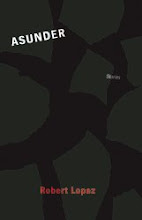Susan Daitch is the author of two novels, L.C.(Lannan Foundation Selection and NEA Heritage Award, The Colorist, and a collection of short stories, Storytown. Her work has appeared in Tinhouse, Conjunctions, Guernica, Bomb, Ploughshares, failbetter.com, McSweeney's, The Pushcart Prize Anthology, and The Norton Anthology of Postmodern American Fiction and elsewhere. Her work was featured in The Review of Contemporary Fiction along with William Vollman and David Foster Wallace. Her fourth novel, The Dreyfus Book, will be published by City Lights in Spring, 2011.
Kamby Bolongo Mean River named one of 25 Important Books of the 2000s by HTML Giant
KBMR was named one of 25 Important Books of the decade by HTML Giant. And was a Page One selection of New & Noteworthy Books by Poets & Writers Magazine.
Thursday, August 5, 2010
No news today - Guest Post - Susan Daitch
I had some characters who needed to go to the Berlin Zoo in 1933. It’s a place I have visited, but not in 1933, and I wanted to make sure, to the extent I was able, what the zoo was like about eighty years ago. In the process I got sidetracked by the story of Carl Hagenbeck, animal and human impresario. Hagenback was born in Hamburg in 1844. I imagined him living in the quaint folkloric Germany of Clemens Brentano or the fairy tale middle European constructions of Ghislain de Diesbach. His father, a fishmonger with a side business in exotic animals, gave Carl, when still a child, a seal and a polar bear cub as presents. Hagenback displayed them in a tub and charged a few pfennigs to spectators interested in watching arctic mammals splash around. These early entrepreneurial endeavors eventually led to a career capturing, buying, and selling animals from all over the world, destined for European and American zoos. Hagenback, known as “the father of the modern zoo” was a pioneer in the concept that animals should be displayed in some approximation of their natural habitat. Acknowledging little difference between human (at least some humans) and animals in terms of questions of captivity and display, he also exhibited human beings: Eskimos, Laps, Samoans, African, Arabs, native Americans, all stationed in zoos across Europe in reproductions of their native environments. Creating panoramic fictional spaces for his creatures, Hagenbeck is often credited was being the originator of the amusement park. How these captive people felt about the peculiar dress, language and eating habits of the spectators has not, as far as I know, been recorded. European emissaries, whether propelled by diplomatic missions or for purposes of trade, went into the world and brought back artifacts, instigated the concept of collecting for those who could afford it. German museums would come to display the Gate of Ishtar, vast Chinese temples, Assyrian fortresses, and other treasures. Hagenbeck, a hybrid figure: ethnographer, zoologist, showman, anthropologist, capitalist, but also the son of a fishmonger was not of this class of adventurer. A populist, ok, but also the question hangs in the margins: when did the Berlin Zoo stop displaying humans? 1931, I think, but I’m not sure.
In a Berlin bookstore I found a copy of Gerald Durrell’s Zoo in My Luggage, a long lost book from my childhood. In 1957 Durrell and his wife traveled to Cameroon to collect endangered animals and bring them back to England for his private zoo with the intension of re-introducing species back into the wild whenever possible.
Susan Daitch is the author of two novels, L.C.(Lannan Foundation Selection and NEA Heritage Award, The Colorist, and a collection of short stories, Storytown. Her work has appeared in Tinhouse, Conjunctions, Guernica, Bomb, Ploughshares, failbetter.com, McSweeney's, The Pushcart Prize Anthology, and The Norton Anthology of Postmodern American Fiction and elsewhere. Her work was featured in The Review of Contemporary Fiction along with William Vollman and David Foster Wallace. Her fourth novel, The Dreyfus Book, will be published by City Lights in Spring, 2011.
Susan Daitch is the author of two novels, L.C.(Lannan Foundation Selection and NEA Heritage Award, The Colorist, and a collection of short stories, Storytown. Her work has appeared in Tinhouse, Conjunctions, Guernica, Bomb, Ploughshares, failbetter.com, McSweeney's, The Pushcart Prize Anthology, and The Norton Anthology of Postmodern American Fiction and elsewhere. Her work was featured in The Review of Contemporary Fiction along with William Vollman and David Foster Wallace. Her fourth novel, The Dreyfus Book, will be published by City Lights in Spring, 2011.
Subscribe to:
Post Comments (Atom)




No comments:
Post a Comment